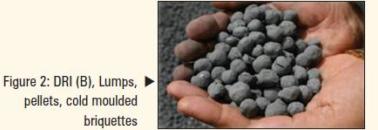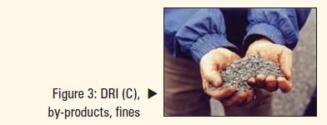201157 Safe carriage of direct reduced (or sponge) iron (DRI)
Edited from Steamship Mutual Risk Alert 23
At least two serious casualties involving ships loaded with DRI, both resulting in loss of the vessels and one with loss of lives, have occurred in the last decade; the Ythan (2004)and the deliberate sinking by the French authorities of the Adamandas (2003) which was deliberately sunk by the French authorities with cargo and bunkers onboard (investigation report available at http://www.beamer-france.org/BanqueDocument/pdf_81.pdf). In the case of the Ythan, the explosions resulted from the reaction between the vessel's cargo of Hot Briquetted Iron (HBI) Fines and the moisture contained in the cargo at the time of loading.
At the time of the two incidents, the IMO Code of Safe Practice for Solid Bulk Cargoes (the BC Code) categorized two types of DRI, namely hot moulded briquettes or hot briquetted iron, subsequently redesignated as DRI (A), and pellets, lumps etc, subsequently redesignated as DRI (B). The DRI/HBI fines cargo could not in reality be categorized as either (A) or (B) under the Code and the expert advice was to treat it as the more dangerous and reactive type of DRI (B).
In view of these and other incidents, the International Maritime Solid Bulk Cargoes Code (IMSBC Code) superseded the BC Code from 01 Jan 2011. The new requirements in relation to the carriage of DRI (A), (B) and (C) can be summarised as follows:
DRI (A), Briquettes, hot moulded

• A maximum moisture content of 1%;
• Cargo is to comprise essentially of whole briquettes. Fines of less than 6.35 mm size and dust are limited to 5%;
• Concentration of hydrogen to be measured throughout the voyage. If it exceeds 25% of lower explosive limit (LEL), appropriate precautions are to be taken;
• Surface ventilation only shall be conducted as necessary. When mechanical ventilation is used, the fans shall be certified as explosion-proof and shall prevent spark generation;
• Wire mesh guards shall be fitted over inlet and outlet ventilation openings.
DRI (B), Lumps, pellets, cold moulded briquettes

• Average particle size is limited to 6.35mm to 25mm. Fines of less than 6.35mm and dust are limited to 5%;
• Loading conveyors are to be dry;
• Prior to loading, an ultrasonic test or another equivalent method with a suitable instrument shall be conducted to ensure weather-tightness of the hatch covers and closing arrangements;
• Moisture content must be less than 0.3% and must be monitored during loading;
• Any cargo that has already been loaded into a cargo space and which subsequently becomes wetted, or in which reactions have started, shall be discharged without delay;
• Carriage is only permitted under an inert gas blanket;
• The ship shall be provided with the means to reliably measure the temperature at several points within the stow (e.g. thermocouples buried at various locations within the cargo with remote readouts), and to determine the concentrations of hydrogen and oxygen in the cargo space atmosphere on voyage whilst minimising the loss of the inert atmosphere;
• Oxygen concentration shall be maintained at less than 5% throughout the voyage;
• The ship shall be provided with the means to ensure that the requirement to maintain the oxygen concentration below 5% can be achieved throughout the voyage. The ship's fixed CO2 fire-fighting system shall not be used for this purpose. Consideration must therefore be given to providing vessels with the means to top up the cargo spaces with additional supplies of inert gas, having regard to the duration of the voyage;
• The ship shall not sail until the Master and a competent person are satisfied that:
- All loaded cargo spaces are correctly sealed and inerted;
- The cargo temperatures have stabilised at all measuring points and are less than 65°C;
- Concentration of hydrogen in the free space has stabilised and is less than 0.2% by volume;
- Oxygen concentration is and can be maintained at less than 5% throughout the voyage.
DRI (C), By-products, Fines

• Average particle size is less than 6.35mm, and there are to be no particles greater than 12mm in size;
• The reactivity of this cargo is extremely difficult to assess due to the nature of the material that can be included in the category. A worst-case scenario should therefore be assumed at all times;
• Carriage requirements are largely identical to those for DRI (B), including the 0.3% limit on moisture and carriage under an inert gas blanket.
More detailed information about the carriage requirements is given in the IMSBC Code. It should be noted that it is necessary to comply with all of the relevant provisions of the Code.
